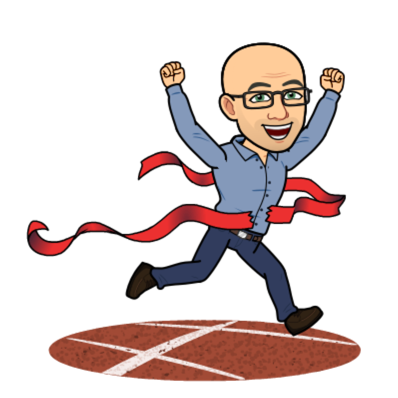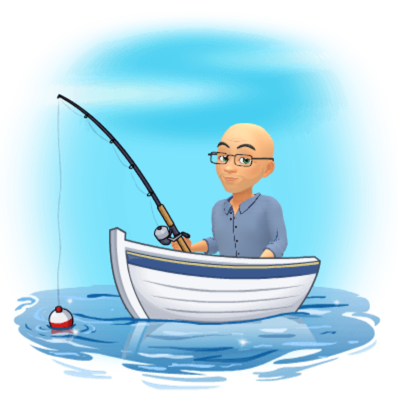No we aren't going to talk the US Army....😆 We are just borrowing their tagline.

"Be All You Can Be"
The title of this article is one most of you may be familiar with. It was the tagline for the US Army, which started using it back in 1981 and did so for about 20 years. The slogan is now being reintroduced to the next generation of recruits. I wanted to touch on the motto about your health because most of us are underachievers when it comes to our health. I hope you come away with some hints or tips for returning to being all you can be.
The majority of the information that I consume has to do with health. One of the items that recently popped up on one of my social media feeds was a new program started by Dr. Mark Hyman called Function Health. The program allows you to get 100 lab tests for $499, which I found shocking. I have a scheduled yearly physical, so I decided to join the program. This occurred while my wife and I visited our daughter and granddaughter in the Twin Cities, so I scheduled the blood draw at a Quest lab.
The amount of blood they took required two visits for collection, so coordinating the draws took some time, but overall, it was seamless. I couldn’t see which sites in ND are able to perform the necessary tests, but I will look into that further when I do some follow-up tests in 3-6 months, so I'll keep you posted.
Once the labs were drawn, my results started coming into my dashboard, and I would get a notification when tests were uploaded into the app. The process of finalizing the labs took about 2-3 weeks before they were all processed. Once all of the tests were done, clinician notes were added with recommendations based on the test results. I will take the labs and notes to my physical and share them with my provider.
What did I learn from the tests? The items that stood out were elevated iron and estrogen levels. In previous tests that I've done, specifically genetic testing, my body's detoxification pathways are not very efficient, and I think that is where the elevated estradiol level comes from. Taking specific nutrients will help optimize those detox pathways, and we hope to lower that level. The elevated iron levels were a bit of a surprise, but I don't recall ever testing those. I'm wondering if the plan for this is to start giving blood. The other markers that were out of range were lipid levels, which I will once again try to address through diet and supplements.
The program also provides a Biological Age based on the test results, and mine came in 11.6 years younger than my actual age. I was stoked about that figure. The platform also included information on diet and supplements recommended based on the test results. Overall, I was pleased with the results and am interested to see what my provider thinks of them.
Why am I sharing this information with you? Testing is essential to the "be all you can be" process. I shared the program with a friend of mine, and he responded, "I don't know if I want to have all that information." Knowing my test results is crucial for making the changes necessary to live a healthy life. If you have ever heard about "dining in the dark," which is sensory deprivation where you are blindfolded and you eat your meal, not having test results would be a similar situation. How do we battle the enemy without knowing who the enemy is? Knowledge is power.
Life is an ongoing ebb and flow of good times and bad, consolation and desolation when we think of our health. Unfortunately, over time, our health will deteriorate. Taking the necessary steps to slow the process or, in many instances, reversing the damage that has previously been done is a way to live a healthier, happier life. Everyone's journey is different. Each of us has a different motivation, and tapping into that motivation is helpful in your journey.
One of my recent struggles was getting back into a routine of exercising. One of my goals throughout the year is to ride in the Maah Daah Hey 100 mountain bike race in August. Due to some health issues this summer, I couldn’t ride my bike to the extent needed to participate in the race, so I didn't ride for the first time in about 6 or 7 years (desolation).
I needed a kick in the fanny, so I hired my good friend Joe Champa to train me twice weekly. This has got me back in the habit of going to the gym regularly. My strength, flexibility, and energy levels are all improving in the process (consolation).
I mention these things because my life is in a constant ebb and flow and surrounding yourself with individuals who can help you get to a better spot is vital to this process. My dad just mentioned to me last night as I was giving him a haircut (imagine that a bald barber) that he seemed to be losing some muscle mass at 87 years old. I told him that he needed to start working out with Joe and me, so we will see where that goes.
What can you do to "be all you can be?"
If you don't feel well, do some testing or align yourself with someone who can help navigate this area to get to the root cause. Tests can be as simple as a vitamin D or omega 3 test or as complex as a genetic, hormone, microbiome, or Functional Health test. Remember, knowledge is power.
Next thing is to move. It doesn't have to be fancy or elaborate, it doesn't have to cost anything, and it can be done in the comfort of your home. You don't need to purchase equipment, as your body weight is enough to get you a workout, but you have to start moving. You will be much happier once you start and get to a place of consolation.
Eat real food. I can't tell you how important it is to eat good, unprocessed food. Start small with fruits and vegetables, fresh or frozen. Maybe try a protein smoothie, an easy way to incorporate fruits and veggies while getting a nice serving size of protein. As Hippocrates said, "Let food be thy medicine and medicine be thy food." We don't put bad gas in our cars and expect them to run great. We treat your body like a classic car and give it the good stuff so it runs how you want it to.
Surround yourself with positive people. I can't express this enough. Positive energy is a currency you cannot do without.
Let's make the number of bad days diminish and the number of good days flourish. It's time to "be all you can be."
Stop by or call the pharmacy if you want help navigating your health journey. Please visit my website at www.irsfeldpharmacy.com to find this and other archived articles in the blog section.
Until next time, be vigilant about your health!!












Share On: